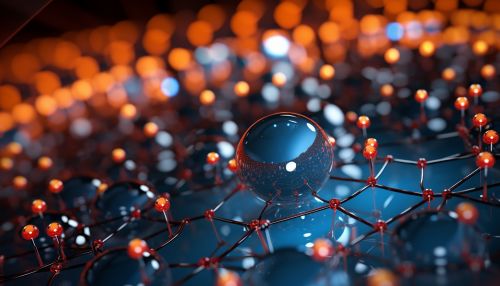Self-assembly
Introduction
Self-assembly is a process in which a disordered system of pre-existing components form an organized structure or pattern as a consequence of specific, local interactions among the components themselves, without external direction. The process is a fundamental principle in nanotechnology and biology.
Principles of Self-assembly
Self-assembly is driven by the system's tendency to minimize its free energy. The components may be in any solid, liquid, or gaseous state. The self-assembling process can be divided into two categories: static and dynamic. In static self-assembly, the ordered state forms as a system cools and nears equilibrium. In dynamic self-assembly, patterns of pre-existing components organized by an external energy source.


Static Self-assembly
Static self-assembly involves the organization of components into patterns or structures without any outside direction. The components may interact to create structures that are stable, or in some cases, structures that are only stable under certain conditions. The concept of static self-assembly is closely related to thermodynamics, as the process will always seek to maximize entropy.
Dynamic Self-assembly
Dynamic self-assembly, also known as dissipative self-assembly, involves the organization of components into patterns or structures with the input of energy. The energy input can come from a variety of sources, including chemical reactions, light, or heat. The structures formed by dynamic self-assembly are often non-equilibrium structures.
Self-assembly in Biology
In biology, self-assembly is the autonomous organization of biological structures. It includes the self-assembly of proteins into functional machinery or the self-assembly of lipid bilayers to form cell membranes. This process is crucial in the formation of the cell and the function of the entire organism.
Self-assembly in Nanotechnology
In nanotechnology, self-assembly is used in the construction of devices on the nanometer scale. It is a key concept in the field of molecular nanotechnology, where it is often used to construct complex structures from individual molecules.
Challenges and Future Directions
Despite the significant advances in our understanding of self-assembly, there are still many challenges to overcome. These include the control of the self-assembly process, the design of self-assembling systems, and the application of self-assembly in technology and industry.
